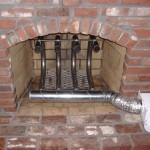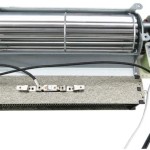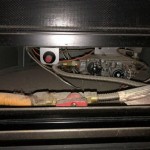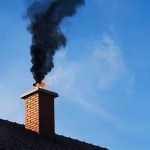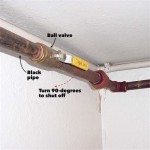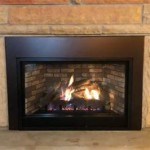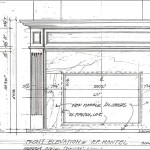Installing a Wood Fireplace Insert: A Comprehensive Guide
A wood fireplace insert is an excellent way to enhance the warmth and ambiance of your home while improving the efficiency of your existing fireplace. Installing a wood-burning insert is a substantial project, but with proper planning and execution, it can be a rewarding upgrade. This comprehensive guide will provide you with the necessary information to understand the process, benefits, and considerations involved in installing a wood fireplace insert.
Benefits of Installing a Wood Fireplace Insert
Investing in a wood fireplace insert offers numerous benefits, making it a worthwhile investment for many homeowners. Here are some key advantages:
Increased Efficiency: Wood fireplace inserts are significantly more efficient than traditional open fireplaces. They have a sealed combustion system that directs heat into your home instead of letting it escape up the chimney. This improved efficiency can lead to significant savings on heating costs.
Enhanced Safety: Open fireplaces can be a safety hazard, with the potential for sparks, smoke, and creosote buildup. Wood fireplace inserts address these concerns with their sealed combustion system, reducing the risk of fire and ensuring cleaner air quality.
Improved Aesthetics: Fireplace inserts come in various styles and finishes, allowing you to enhance the aesthetics of your fireplace and overall room design. They offer a modern and sleek look, complementing different interior styles.
Steps Involved in Installing a Wood Fireplace Insert
Installing a wood fireplace insert is a multi-step process that requires careful planning and execution. Here's a general overview of the steps involved:
1. Assess Your Existing Fireplace: Before purchasing an insert, it's crucial to assess the dimensions and condition of your existing fireplace. Measure the width, height, and depth of the fireplace opening, and ensure it's compatible with the insert you intend to install.
2. Choose the Right Fireplace Insert: Select a wood fireplace insert that fits your existing fireplace dimensions and meets your heating needs. Consider factors such as heat output, fuel efficiency, and stylistic preferences.
3. Prepare the Fireplace: Before installing the insert, you will need to prepare your existing fireplace. This may involve removing the old fireplace grate and fireback, cleaning the firebox, and ensuring the chimney is properly inspected and cleaned.
4. Install the Fireplace Insert: The installation process will vary depending on the specific insert model and your fireplace design. Typically, it involves attaching the insert to the existing fireplace opening, connecting the vent pipe to the chimney, and sealing any gaps to ensure optimal performance.
5. Connect the Vent Pipe: The vent pipe of the wood fireplace insert must be properly connected to the chimney to facilitate smoke and combustion gases. This may involve using a variety of components, such as a vent pipe adapter, a draft diverter, and a chimney liner.
6. Ensure Proper Ventilation: Adequate ventilation is crucial for safe and efficient operation of the wood fireplace insert. Ensure there are sufficient air intakes and outlets to provide the necessary airflow for combustion and heat transfer.
7. Inspect and Test: Once the installation is complete, it's essential to inspect the insert and its components thoroughly. Ensure all connections are secure, and the vent pipe is properly sealed. Perform a test fire to ensure proper operation and address any potential issues.
Considerations for Installing a Wood Fireplace Insert
While installing a wood fireplace insert can be a rewarding project, it's important to consider certain factors before embarking on the process:
Cost: Wood fireplace inserts range in price depending on features, size, and brand. It's essential to factor in the cost of the insert, installation materials, and labor.
Installation Complexity: Installing a wood fireplace insert can be a challenging task that may require professional assistance. It’s essential to assess your skills and experience before attempting the installation yourself.
Local Building Codes: Ensure compliance with local building codes and regulations for fireplace installations. Consult with your local building department to obtain the necessary permits and approvals.
Fire Safety: It's crucial to prioritize fire safety before, during, and after installing a wood fireplace insert. Ensure that your home has working smoke detectors and fire extinguishers, and that you regularly inspect and clean the chimney to prevent creosote buildup.
Wood Stoves And Fireplaces How To Install A Burning Fireplace Insert Hearth Com Forums Home

Wood Fireplace Insert Installation Overview By Rockford Chimney Supply

Custom Installation Of Fireplace Inserts Insert Installations Sierra Hearth And Home

Fireplace Insert Installation Wood Inserts Gas Pellet And Electric

Best Fireplace Insert Repair Installs Ton Service

Wood Fireplace S Installation Chimney Sweeps Of America

Diy How To Install A Wood Burning Fireplace Insert Chimney Liner And Blockoff Plate Osburn 1800

Lodi Wi Installing Fireplace Insert Remodel

Wood Burning Fireplace Insert Frederick Md Repair Install

Fireplace Insert Everything You Need To Know Install An
Related Posts

